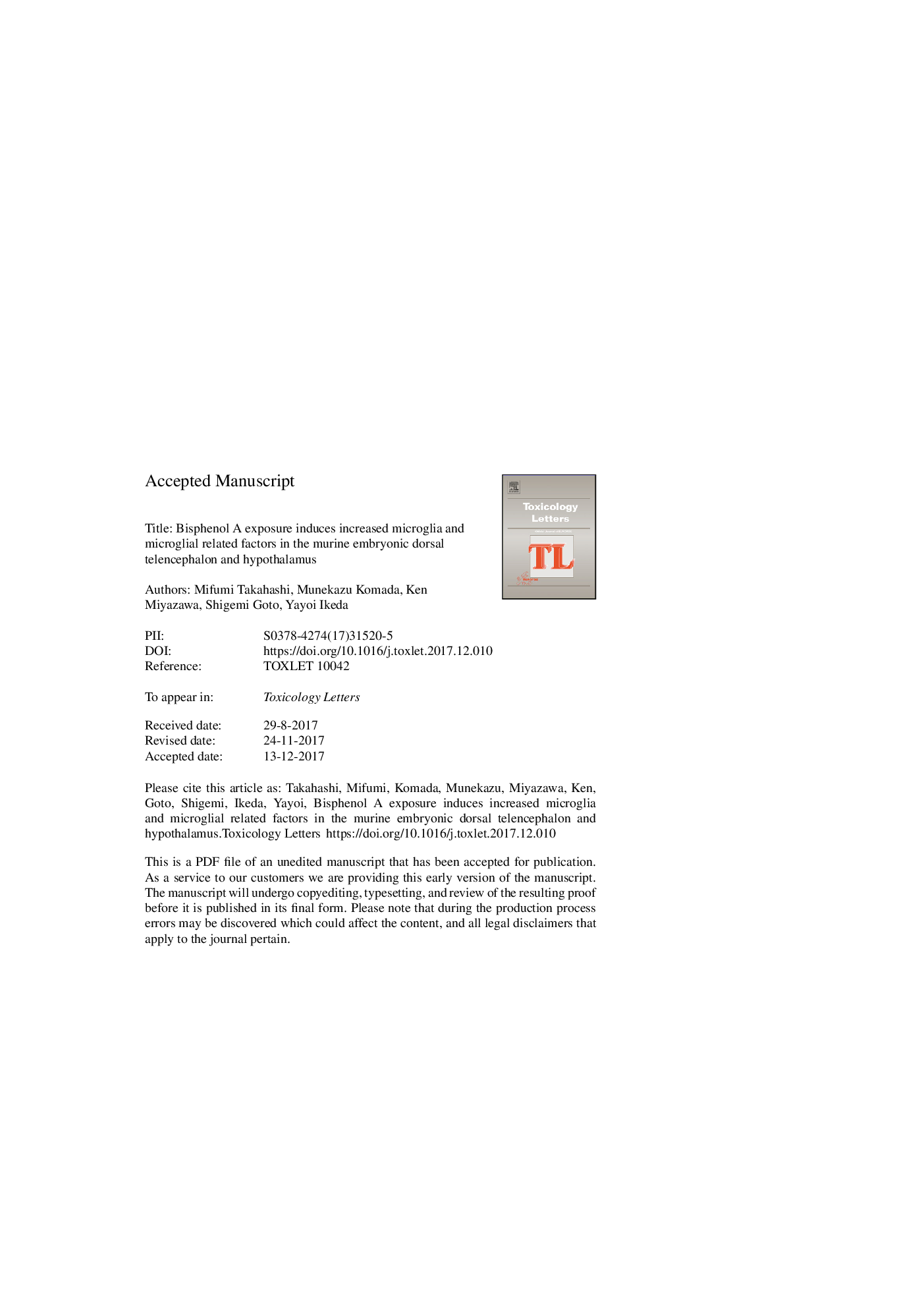| Article ID | Journal | Published Year | Pages | File Type |
|---|---|---|---|---|
| 8553478 | Toxicology Letters | 2018 | 28 Pages |
Abstract
Bisphenol A (BPA) is a widely used compound in the food packaging industry. Prenatal exposure to BPA induces histological abnormalities in the neocortex and hypothalamus in association with abnormal behaviors. Yet, the molecular and cellular neurodevelopmental toxicological mechanisms of BPA are incompletely characterized on neuroinflammatory-related endopoints. To evaluate the neurodevelopmental effects of BPA exposure in mouse embryos, we examined microglial numbers as well as the expression of microglial-related factors in the E15.5 embryonic brain. BPA-exposed embryos exhibited significant increases in Iba1-immunoreactive microglial numbers in the dorsal telencephalon and the hypothalamus compared to control embryos. Further, the expression levels of microglial markers (Iba1, CD16, iNOS, and CD206), inflammatory factors (TNFα and IL4), signal transducing molecules (Cx3Cr1 and Cx3Cl1), and neurotrophic factor (IGF1) were altered in BPA-exposed embryos. These findings suggest that BPA exposure increases microglial numbers in the brain and alters the neuroinflammatory status at a transcriptional level. Together, these changes may represent a novel target for neurodevelopmental toxicity assessment after BPA exposure.
Keywords
BPATNFαEtOHDorsal telencephalonIL4CX3CL1iNOSCX3CR1BDNFIgf1OtpEthanolNeuroinflammationInterleukin 4Bisphenol ACNSembryonic dayinducible nitric oxide synthasecentral nervous systemtumor necrosis factor alfainsulin-like growth factor 1Brain-derived neurotrophic factorMicrogliaHypothalamusEstrogen receptor
Related Topics
Life Sciences
Environmental Science
Health, Toxicology and Mutagenesis
Authors
Mifumi Takahashi, Munekazu Komada, Ken Miyazawa, Shigemi Goto, Yayoi Ikeda,
